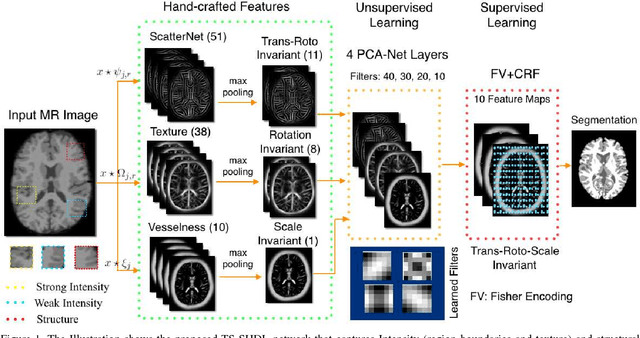Texture and Structure Incorporated ScatterNet Hybrid Deep Learning Network (TS-SHDL) For Brain Matter Segmentation
Paper and Code
Aug 30, 2017



Automation of brain matter segmentation from MR images is a challenging task due to the irregular boundaries between the grey and white matter regions. In addition, the presence of intensity inhomogeneity in the MR images further complicates the problem. In this paper, we propose a texture and vesselness incorporated version of the ScatterNet Hybrid Deep Learning Network (TS-SHDL) that extracts hierarchical invariant mid-level features, used by fisher vector encoding and a conditional random field (CRF) to perform the desired segmentation. The performance of the proposed network is evaluated by extensive experimentation and comparison with the state-of-the-art methods on several 2D MRI scans taken from the synthetic McGill Brain Web as well as on the MRBrainS dataset of real 3D MRI scans. The advantages of the TS-SHDL network over supervised deep learning networks is also presented in addition to its superior performance over the state-of-the-art.
 Add to Chrome
Add to Chrome Add to Firefox
Add to Firefox Add to Edge
Add to Edge